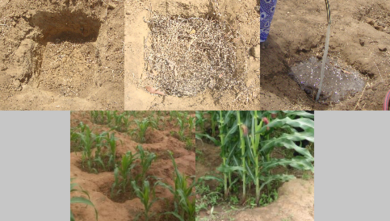Zaï facts for kids
Zaï (pronounced "zah-ee") is a special farming method. It involves digging small pits in the ground. These pits help collect water and gather natural fertilizer called compost. This technique is very useful in dry areas. It helps bring life back to tired soil.
Contents
What is Zaï Farming?
Zaï is a traditional way of farming. It is used in places where the soil is hard and doesn't let water soak in easily. Farmers dig small holes to help their crops grow better.
How Zaï Pits Work
The pits are usually about 15 to 50 centimeters (6 to 20 inches) wide. They are also around 5 to 15 centimeters (2 to 6 inches) deep. Farmers dig them about 80 centimeters (31 inches) apart. These pits act like tiny reservoirs. They catch rainwater and hold it for the plants. They also concentrate compost, which is like food for the soil.
This method is mostly used in western Sahel. This dry region includes countries like Burkina Faso, Niger, and Mali. Zaï helps make dry land fertile again. It also helps the soil become healthier.
Who Improved Zaï?
The Zaï method has been used for a long time. But it became much more popular in the 1980s. This was thanks to a farmer named Yacouba Sawadogo. He lived in Burkina Faso.
Yacouba Sawadogo made an important change. He started filling the Zaï pits with manure and compost. Manure is animal waste, and compost is decayed plant material. Both are great for feeding plants. This extra food helped plants grow much stronger.
The manure also attracted tiny insects called termites. Termites dig tunnels in the soil. These tunnels help break up the hard ground even more. This allows water and air to reach plant roots better. Yacouba also made the pits a little bigger than they traditionally were.
Why is Zaï Important?
Using Zaï holes can greatly improve crop harvests. For example, the amount of trees, sorghum, and millet grown can increase by up to 500 percent. This means farmers can grow five times more food! It helps people in dry areas have enough to eat.
Other Ways to Farm
Sometimes, Zaï might not be the best choice. This is true for very light soils. In these cases, some farming experts suggest a different method. They use a "diking" technique. This involves building small walls or ridges to control water flow.
See also
 In Spanish: Zaï para niños
In Spanish: Zaï para niños
- Farmer-managed natural regeneration (FMNR)
- Regenerative agriculture
- Hügelkultur
- Semicircular bund


